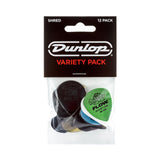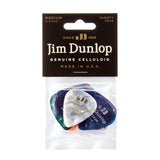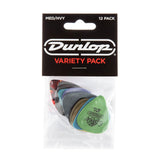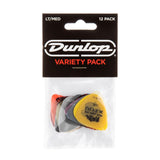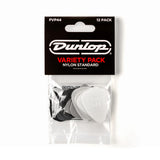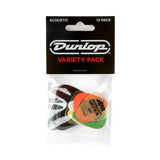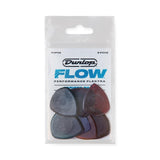A fret level, or fret dressing as it’s sometimes known, is one of the most important guitar repairs in any self respecting tech or luthiers arsenal. It’s a fairly simple process to complete by yourself, but it needs to be done the right way.
Typically as you play your guitar over the years the strings wear down the frets because guitar frets are made of a softer material than the strings you play. Given enough time, small divots will appear the in the frets where they’re frequently coming in to contact with the strings. Amongst many other issues, this can cause intonation problems, kill your sustain and create notes that choke out when you bend up.
What You'll Need
A fret dress will level out the frets and get your guitar back to playing as if it were new, but you'll need some specialised tools to perform this task.
- Levelling Beam
- Straight Edge
- Fret Rocker
- Fret Crowning File
- Fret Bevel File
- Fret Files
- Guitar Neck Cradle
- Low Tack Masking Tape
Preparing for a Fret Level
Now that we have the tools we need, lets get onto doing the job! We’ll need to take some steps to prepare the guitar before we commence identifying the issues and resolving them.
Adjust the Truss Rod
You need to make sure your neck is straight once the strings are off and before you begin levelling frets. If you level your frets whilst there is back-bow or up-bow then your frets will not be level for any subsequent truss rod adjustments. This will cause you even more headaches further down the line. If you’re not sure about adjusting the truss rod check out Part 1 of our Guitar Setup Guide.
Clamp Down
The last thing you want whilst you’re doing a fret level is the guitar moving around, so you’ll need to make sure it's nice and steady. Provided you have a solid, flat platform you should be alright, but a lot of luthiers and techs like to lock their guitars down when performing a fret dress. There are various ways to safely and securely clamp your guitar down and one common way is to use ratchet straps to lash your guitar to the workbench. You’ll want the neck to be level with guitar body, so it’s a good idea to raise the body up to the same level as your neck cradle so you’ve got a nice and flat platform to the start levelling.
Mask off the Fretboard
Next up you’ll want to tape off the fretboard wood, leaving the frets themselves exposed. Using low tack masking tape is a must for this to prevent any damage or sticky residue being left on the fretboard. Make sure to keep the tape off the back of the neck, leaving it hanging off the edge so you don’t run the risk ok damaging the finish on the neck.
Cover your Pickups
When filing your frets, small pieces of metal will be flying around everywhere, and the last thing you want is to get these on your pickups. The build up of dust and filings can cause poor performance and even damage your pickups. We tend to use low tack masking tape to cover our pickups before performing a fret level.
How to perform a Fret Dress
Now that we have all our bases covered in terms of prep, let's get onto the fret levelling itself!
Identify High Frets
Using your straight edge, you’ll want to identify roughly where the problem frets are. By placing it flat across the frets and looking side on, you should be able to spot where the tiny gaps emerge. If you've been playing the guitar prior to performing this task, you should already have an idea of where the problem lies. Once you’ve found the offending frets or at least their general area, you can use a fret rocker to get close up and personal, discovering exactly which frets are too high. Generally any kind of straight edge will do here, so long as it's able to cover 3 to 5 frets. We're using the D'Addario String Height Gauge which is great for a variety of maintenance bits!
Mark the Frets
Using a sharpie, mark the tops of the frets that are too high. There’s several reasons to do this, first as you sand the frets you’ll also sand away the sharpie, giving you a visual cue of which frets you’ve sanded. Secondly the sharpie can also make it easier to see any divots that have appeared in the frets. Please note if you have a Maple fretboard then we don’t recommend marking the frets, as it can bleed into and stain your fretboard! In this case it might be wise to make a written note of which frets are too high, to prevent you sanding the wrong ones!
Level the Frets
Using your Levelling Beam, you can now run it gently back and forth against the frets. Do this movement side to side as well and be careful of the nut if you’re sanding close to the headstock. Take this step slow and steady as sanding off too much will cause you more work getting everything else level. Make sure you sand only up until the point that the sharpie has disappeared from the frets. Keep checking the offending areas with the straight edge and rocker until you’re happy that the frets are level. If they still need more work, remark them with sharpie and go again until the pen has disappeared.
Crown the Frets
Once you’re happy that everything is level, you’ll need to crown the frets. This requires specific crowning files that are designed to round off the frets. You’ll need to be super careful not to damage the fretboard when doing this part, a to of people will use a metal fret collar to help with this part, but if you don’t have one of those just take your time doing it! You’ll need to file both sides of the fret so you don’t end up with a point but be extra careful not to file any more off the top of the fret too, as you’ve already levelled it!
Polish the Frets
You might find the frets are a little rough once the levelling and crowning process is done, so a light sanding and fret polishing is the next step. You can use fret sanding rubbers here to remove any roughness or lines from the crowning process, making sure you’ve got a nice and round fret. To finish off, buff the frets to a silky shine with some 0000 steel wool or fret polishing rubbers.
Clean and Finish
Once you’re satisfied that everything is level and your frets are shiny, you can remove the tape slowly and give the guitar a full setup. Make sure you clean the fretboard and nourish it with some conditioner to ensure it’s in the best possible condition. Now that you’ve done the fret level your guitar should be playing much better!
In Conclusion
There you have it, a fret dress from start to finish. As with any kind of remedial work on your guitar, it’s best to take your time with this one as rushing can have the negative effect of making your guitar play worse! If you’re not comfortable with intermediate level guitar repairs, then we would definitely recommend taking your guitar to your local tech or luthier or alternatively practicing on a guitar that you don’t care too much for before doing this on your favourite!
Learn More
Once your fret level is done, you’ll need to perform a full Guitar Setup.
Learn more about frets with our Fret Size Guide.
If you like to do things yourself when it comes to guitars, check out our Guitar Wiring Guide.


















